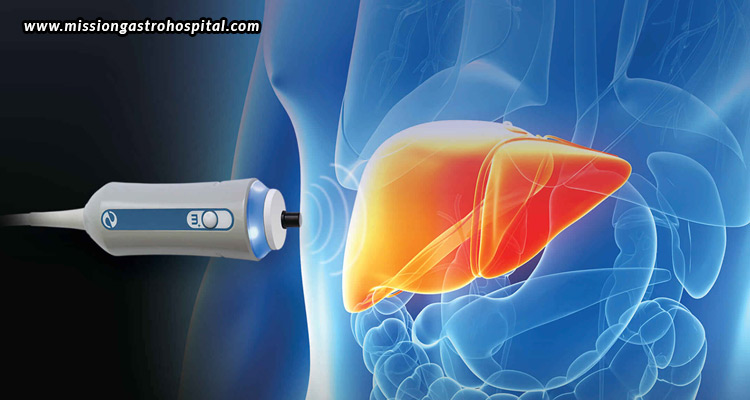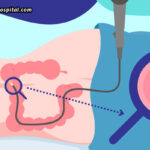Maintaining general health depends heavily on the liver, an essential organ that filters blood, metabolizes chemicals, and detoxifies our bodies. Earlier, intrusive techniques like liver biopsie, which are risky and painful, were used to evaluate the health of the liver. But, recent years have seen the emergence of a ground-breaking technology in hepatology known as FibroScan®, which provides a non-invasive, effective, and safe option for assessing liver diseases.
FibroScan® Liver Scan vs. Liver Biopsy
In the past, physicians used liver biopsies—an expensive, intrusive operation that involves removing liver tissue for examination—to evaluate the condition of the liver and detect fatty deposits and scar tissue. But, there are hazards and outcomes delays with this procedure. On the other hand, the non-invasive FibroScan® ultrasonic elastography instrument provides an option. It is placed on the patient’s ribcage and uses shear waves to quantify the amount of fat and stiffness in the liver. With its speed, ease of use, and immediate findings, this technique makes it possible to identify liver diseases like fibrosis and steatosis early on and treat them effectively. Because it is non-invasive, patients can leave the hospital right away following the scan, which improves comfort and shortens hospital stays. FibroScan® liver test is becoming more and more popular due to its effectiveness in liver surveillance, which may enhance patient outcomes by facilitating early intervention.
Applications of FibroScan®
- Monitoring liver diseases: FibroScan® helps monitor a range of liver illnesses, including alcoholic liver disease, viral hepatitis, and non-alcoholic fatty liver disease (NAFLD). Healthcare professionals may monitor the course of an illness, evaluate the efficacy of a treatment, and make well-informed decisions about the care of their patients using regular scans.
- Liver fibrosis assessment: Chronic liver illnesses like cirrhosis and hepatitis can lead to a buildup of scar tissue in the liver, which is known as liver fibrosis. The presence and degree of fibrosis are indicated by liver stiffness, which is measured by FibroScan®. Timely measures made possible by early identification may be able to stop more liver damage and enhance treatment results.
- Fatty liver disease assessment: The accumulation of fat in liver cells is the cause of fatty liver disease, also known as hepatic steatosis. FibroScan® evaluates the attenuation coefficient, revealing levels of hepatic fat accumulation. This information is crucial for managing disorders ranging from benign fatty liver to more serious types necessitating medical intervention.
Benefits of FibroScan® over traditional methods
- Non-invasive: In contrast to liver biopsies, which require the use of needles to retrieve tissue, FibroScan® is completely non-invasive. This makes it a safer alternative by lowering patient discomfort and removing related hazards, especially for people whose medical problems preclude invasive operations.
- Safety and minimal discomfort: Because FibroScan® doesn’t involve anaesthesia or hospitalization, patients only feel little pain throughout the treatment. It is done as an outpatient procedure, which lowers the possibility of problems and enhances the general patient experience.
- Speed and efficiency: Compared to the drawn-out process of liver biopsies, which includes pre-operative preparation and recuperation, FibroScan® is a rapid procedure that usually takes only a few minutes. Quick outcomes facilitate timely medical decision-making, improving patient care and satisfaction.
- Cost-effectiveness: FibroScan® lowers healthcare expenditures related to conventional liver biopsy procedures by reducing hospital stays, anaesthesia requirements, and post-operative care. It provides a long-term approach to managing liver health holistically, while maximizing the use of resources in healthcare systems.
- Wide applicability: A wide range of patients, including those who may not be able to endure invasive treatments due to advanced age or co-occurring medical issues, can benefit from FibroScan®. Its adaptability also applies to paediatric patients, for whom invasive liver biopsies present considerable difficulties.
- Repeatable and trackable: FibroScan®’s non-invasive design for repeated testing at any point during a patient’s course of therapy, enables ongoing liver health monitoring without the dangers of repeated biopsies. This method facilitates individualized treatment programmes and modifications in response to changing patient requirements.
How to prepare for a FibroScan®
A few easy actions may be taken in advance of a FibroScan® liver test to guarantee accurate test findings and a satisfying experience. First and foremost, you are required to make an appointment with a related healthcare practitioner. During the time of the meet, you are required to wear loose-fitting clothes to facilitate probe placement on the abdomen. During the appointment, make sure that you let your doctor know about any drugs you use, including any supplements, as some may have an impact on assessments of liver stiffness. To guarantee the best possible test accuracy, you may avoid large or heavy meals just before the scan.
Factors impacting the results of FibroScan®
The accuracy of FibroScan® liver test results might vary depending on a number of factors, such as any recent food or alcohol consumption, medical conditions, and any other patient-specific factors. For instance, consuming food or beverages just before the scan may momentarily impact the results of liver stiffness. Acute hepatitis and ascites are also two conditions that might affect the test accuracy. Additionally, personal traits including weight, liver structure, and current medical problems might also affect how reliable a test is.
Interpreting FibroScan® results
It’s essential to comprehend FibroScan® results for efficient diagnosis and treatment planning. The results are quantitatively represented in kPa units, showing the relationship between liver stiffness and the severity of fibrosis. The Attenuation Coefficient (CAP) measures the amount of fat in the liver, with larger values corresponding to increasing fat deposition. The findings also aid in classifying the degree of liver disease, directing medical professionals’ choices on treatments and way of life adjustments.
Grading Liver Fibrosis and Steatosis
When utilizing FibroScan® technology to evaluate liver health, evaluating hepatic fibrosis and steatosis is essential. A simpler F0 to F4 system, Ishak, or METAVIR fibrosis staging can be used to classify the degree of liver scarring. For example, F0 means there is no fibrosis, whereas F4 means there is severe scarring due to cirrhosis. The Controlled Attenuation Parameter (CAP), which classifies the degree of fat accumulation in the liver, is also used in the assessment of steatosis. CAP values between 248 and 268 dB/m indicate moderate steatosis, whereas values below 248 dB/m indicate neither. Severe steatosis is indicated by CAP values more than 268 dB/m, which denotes a substantial accumulation of fat in liver cells. These grading systems give medical professionals the quantitative information they need to correctly diagnose liver disorders and recommend the best course of action. Clinicians can improve patient outcomes and liver health management by customizing therapies to control and perhaps repair liver damage by having a thorough grasp of the degree of fibrosis and steatosis.
What’s in store following a FibroScan® test?
Patients are recommended to make an appointment for a follow-up visit with their physician to discuss the results of the FibroScan® liver test. The doctor may suggest treatment choices or lifestyle changes based on the findings and any current liver issues. These suggestions can be for medication, food adjustments, physical activity, or liver disease management strategies. In the event that liver fibrosis or steatosis is identified, the physician will likely devise a plan for tracking the patient’s liver health, possibly including routine FibroScan® examinations to measure improvements and evaluate the efficacy of treatment. It’s critical that you and your physician have open communication. Please don’t hesitate to ask for advice and explanation if you have any queries or worries regarding your findings or the suggested course of action. Patients and healthcare professionals work together to interpret FibroScan® data, which gives them the knowledge and power to actively manage their liver health and make decisions that will either preserve or improve their quality of life.








